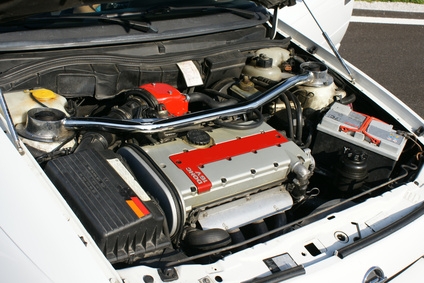
All passenger vehicles manufactured since 1976 are equipped with one or more oxygen sensors, regardless of whether they are equipped with a carburetor, straight fuel injection or a TBI system. These sensors allow an onboard computer to monitor the engine's performance and make adjustments as necessary to keep the engine operating within a predetermined set of performance parameters. When an oxygen sensor fails there are a few possible symptoms that can be expected.
A failing O2 sensor is unable to properly monitor the oxygen levels of the exhaust produced by the engine. When the sensor finally fails completely, it no longer sends a signal to the vehicle's computer. This causes the vehicle's computer to switch to an open loop mode where a preprogrammed fuel mixture is substituted for one calculated based on information from the O2 sensor. This open loop mode allows continued operation of the vehicle in the event of equipment failures, but also causes too much fuel to be provided to the engine, which results in a loss of fuel economy.
O2 sensors gradually lose their ability to respond to changes in the oxygen levels in the exhaust as they age. Over time, contaminates also build up on the sensor's surfaces, further degrading its performance. The end result is that the sensor slowly begins returning a weaker signal to the vehicle's onboard computer, which eventually leads to the computer making improper adjustments to the vehicle's fuel-air mixture. This causes the pollutants within the exhaust gases to increase, which becomes noticeable as higher emissions readings when the vehicle is tested.
A failed or faulty O2 sensor causes a vehicle's onboard computer to provide the incorrect fuel-air mixture to the engine. When too much fuel is supplied to an engine due to a faulty O2 sensor, the extra fuel can cause excessively high exhaust temperatures and overheating of the catalytic converter. This overheating melts the material within the catalytic converter, causing a blockage within the exhaust system. This blockage increases backpressure within the exhaust system and can lead to stalling and hesitation.